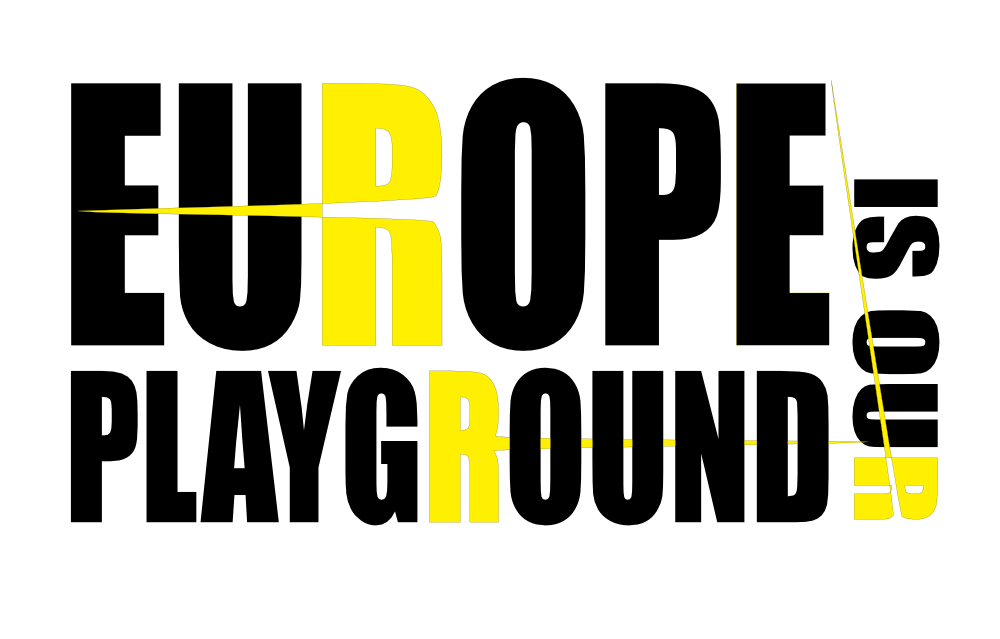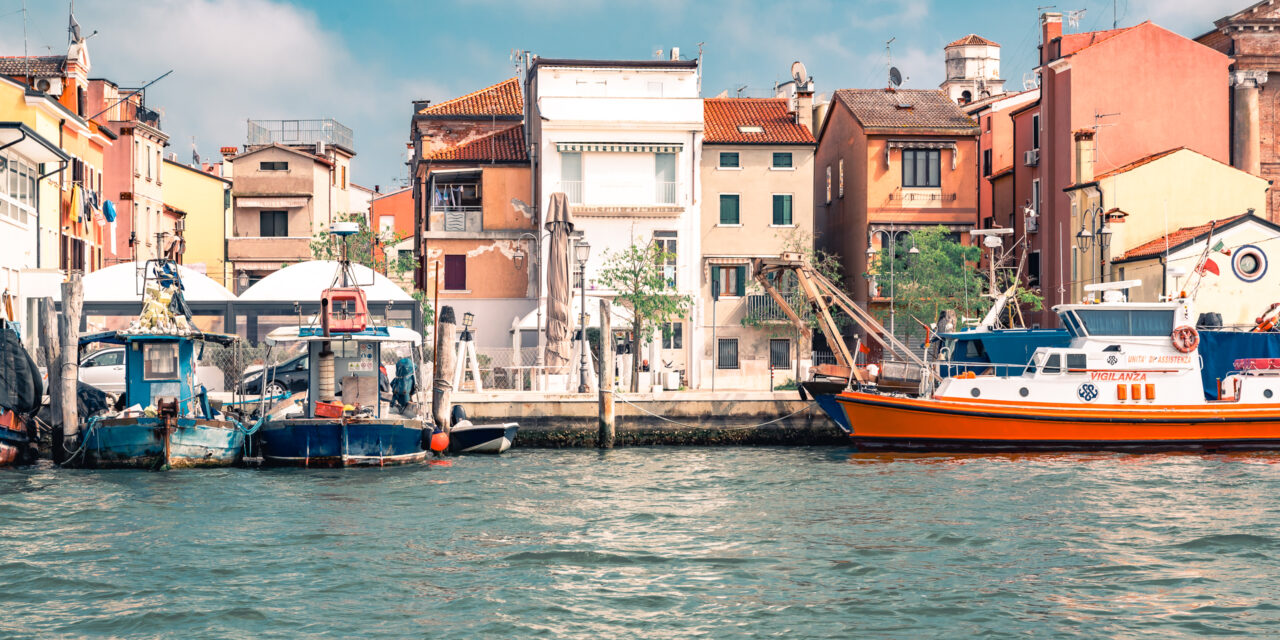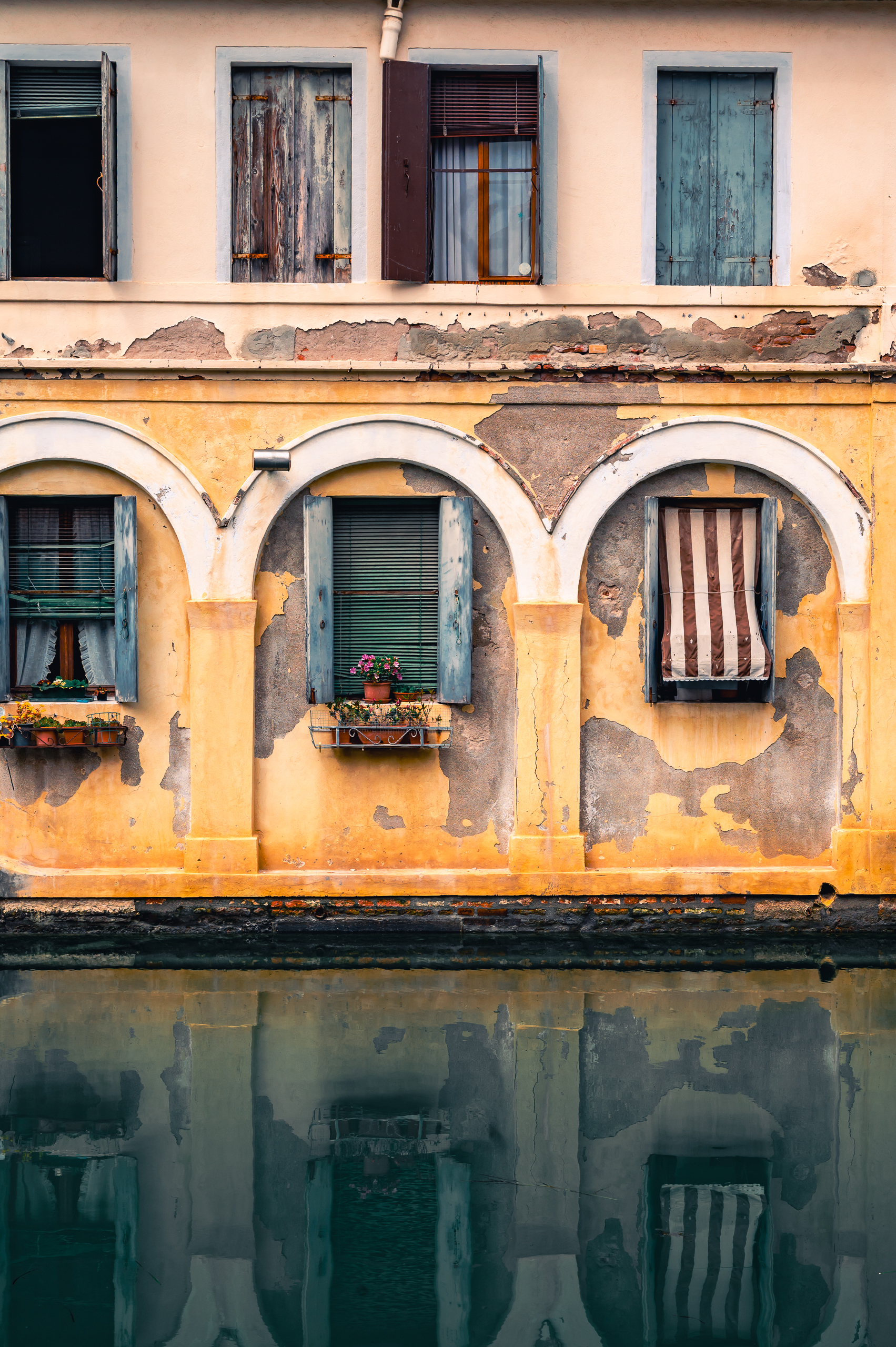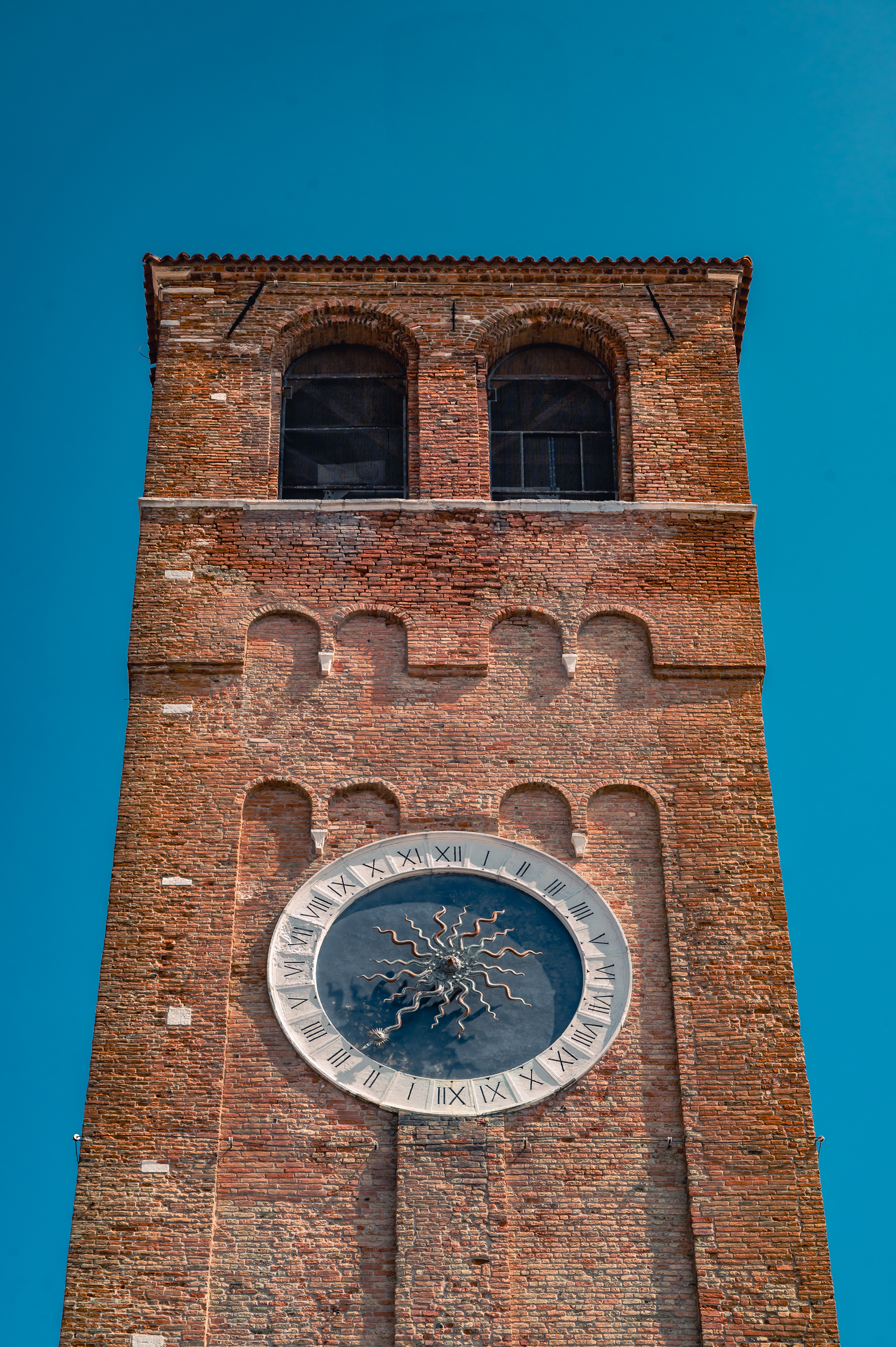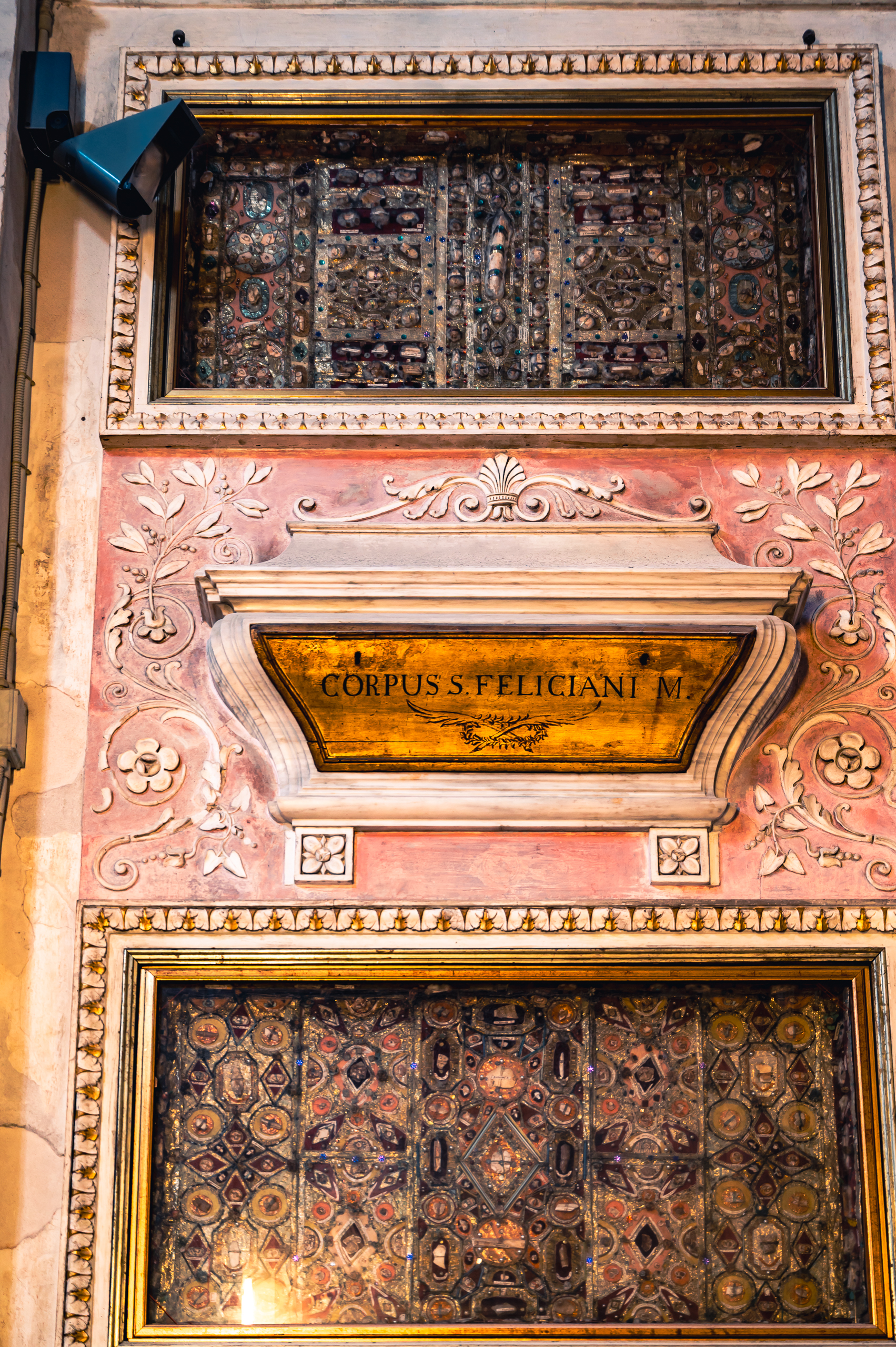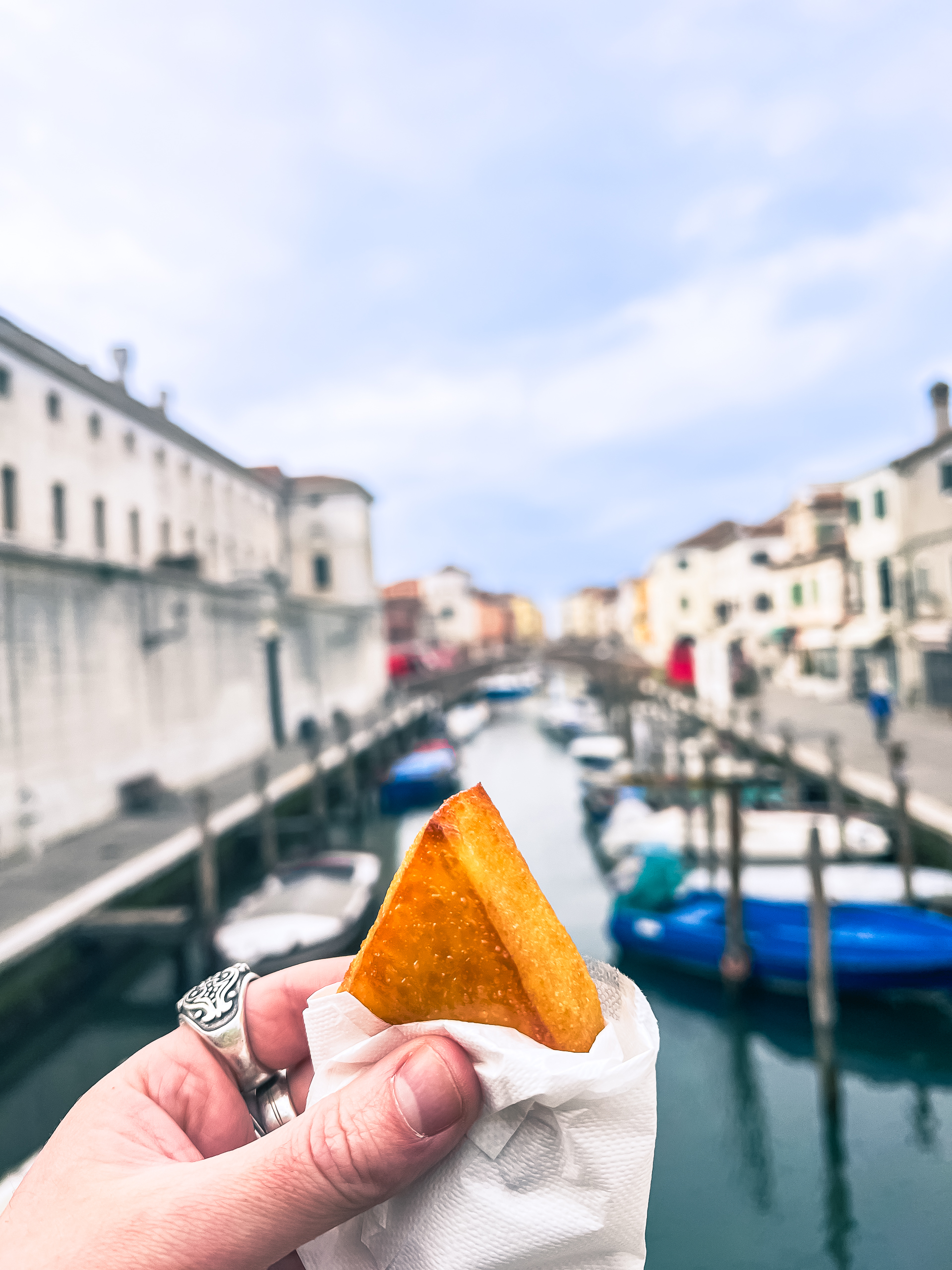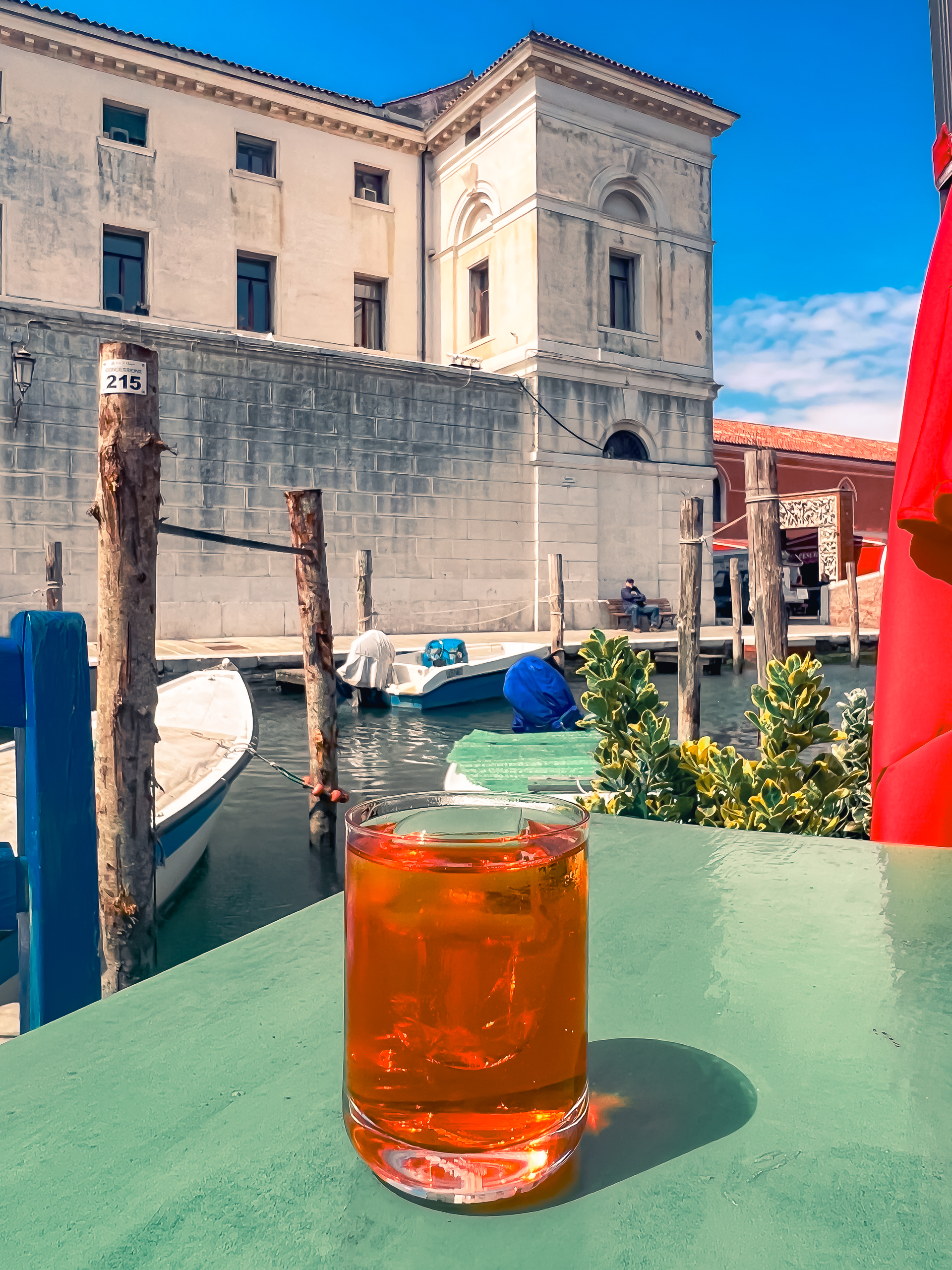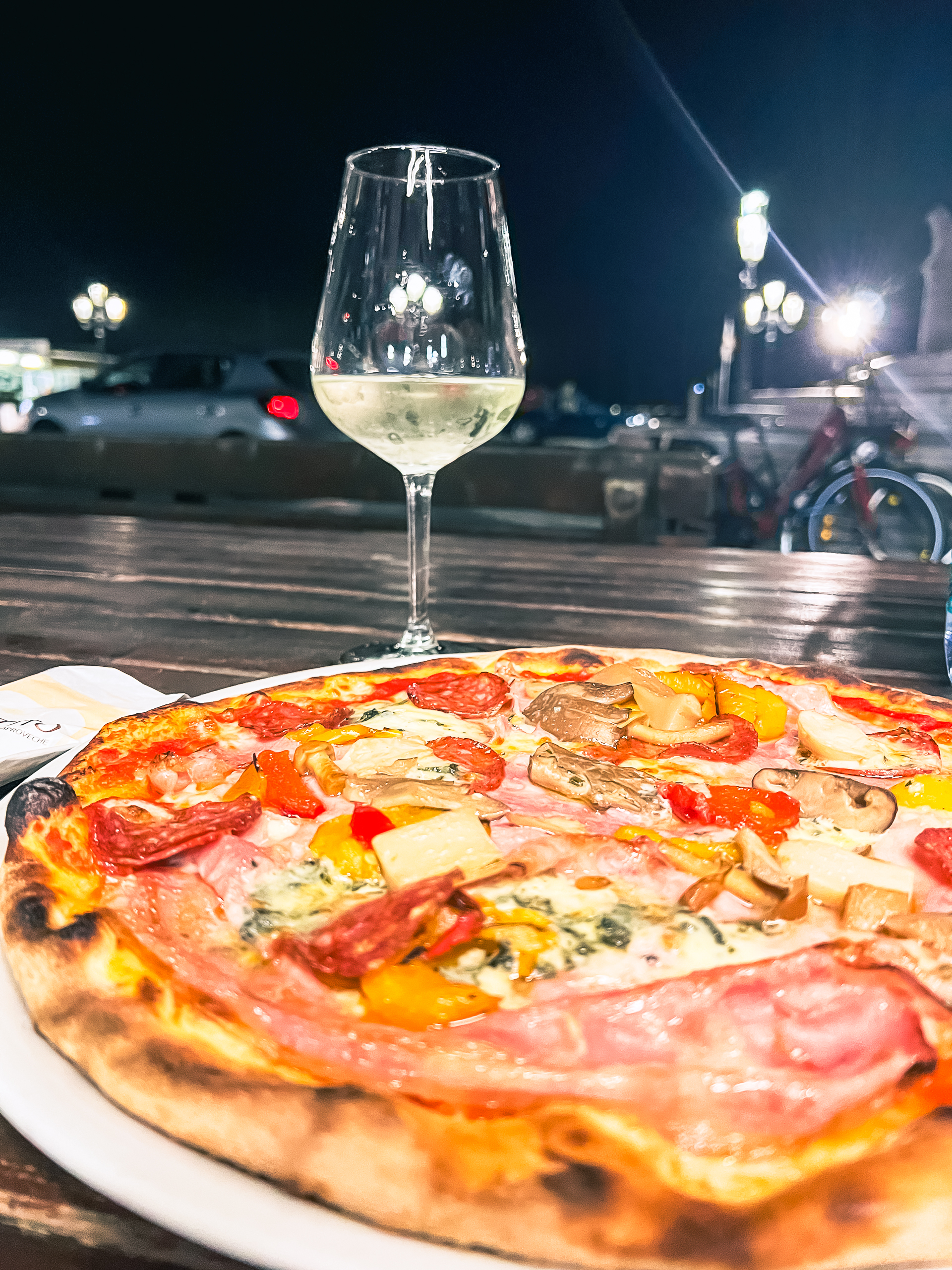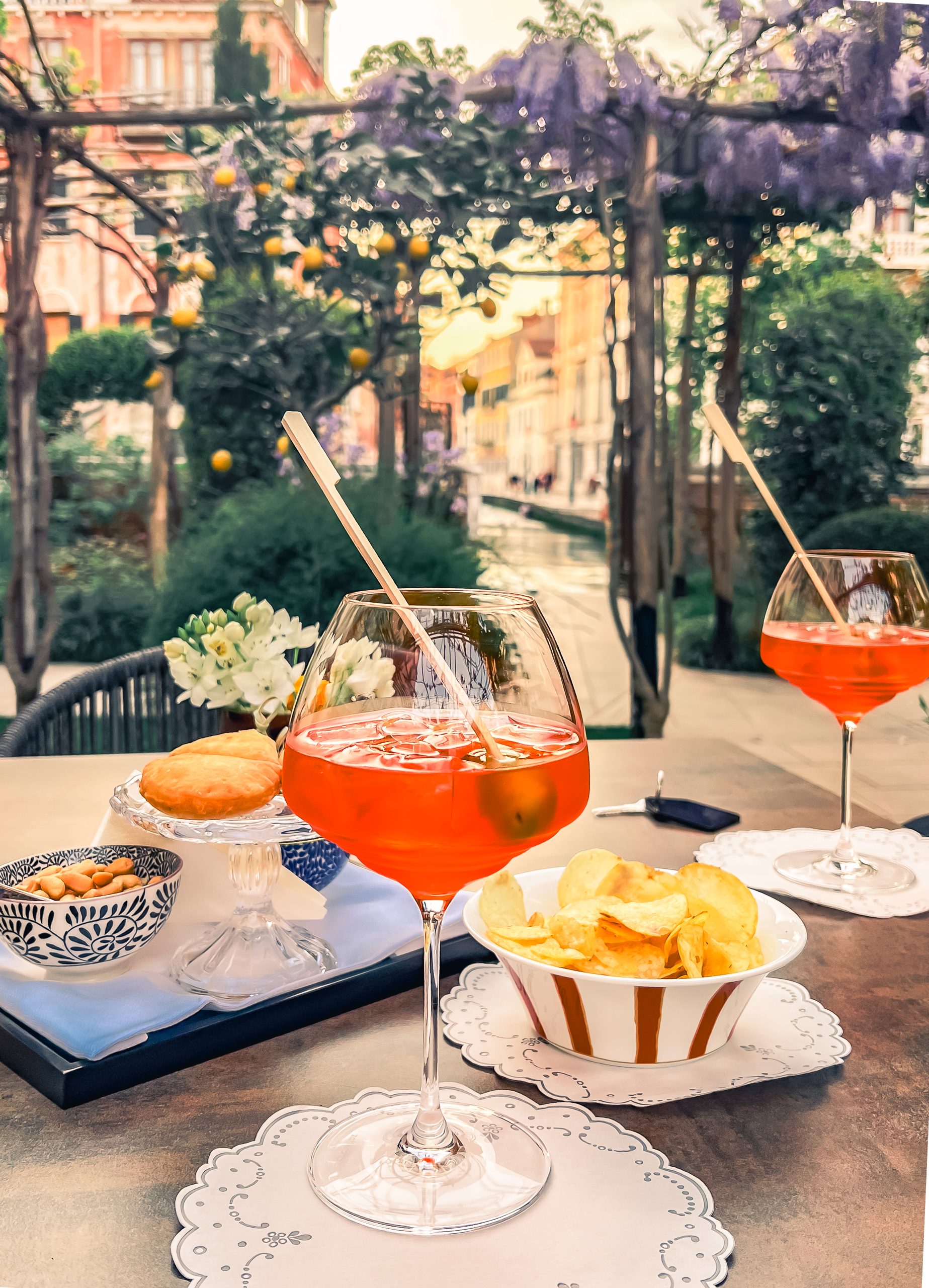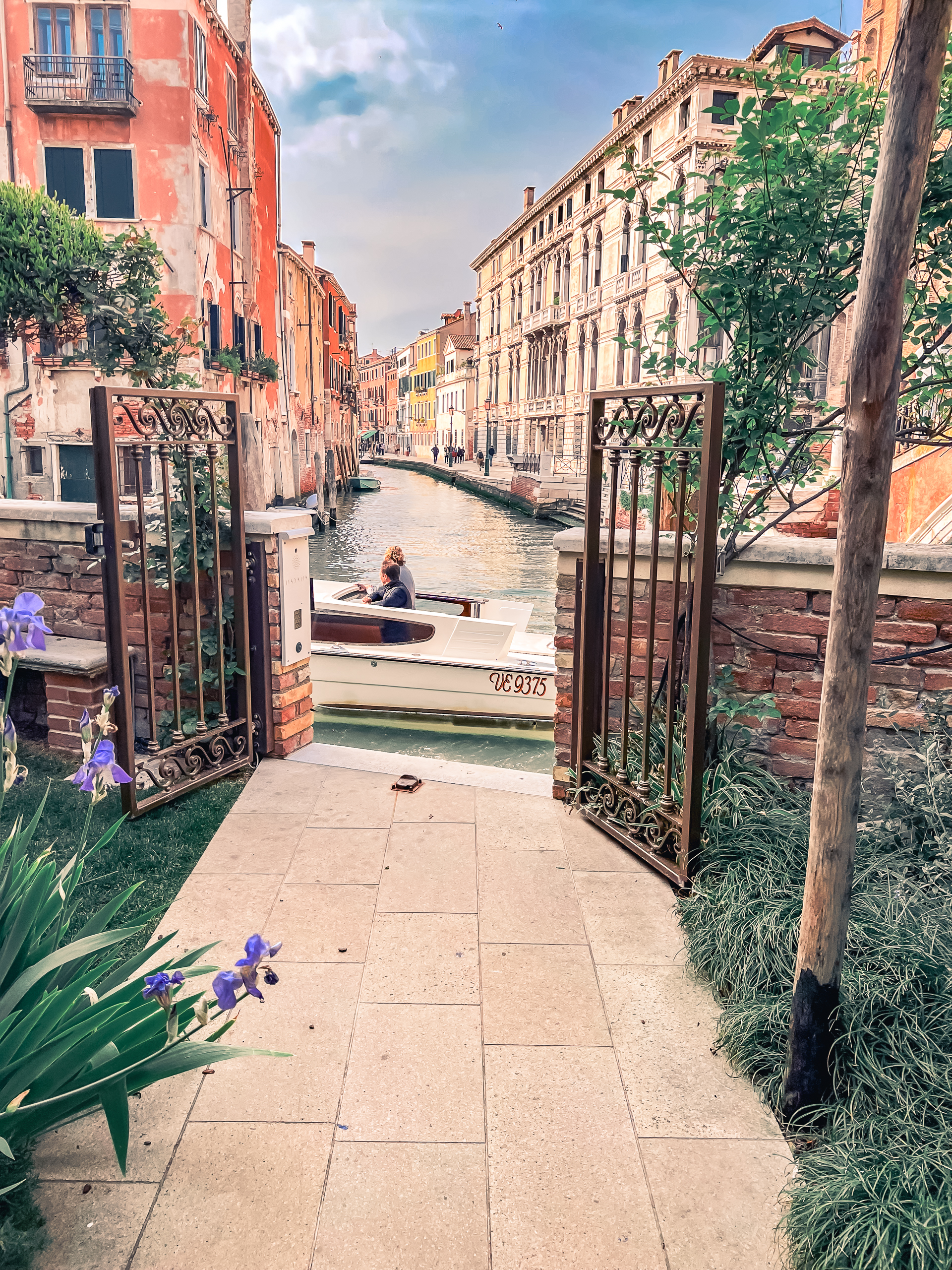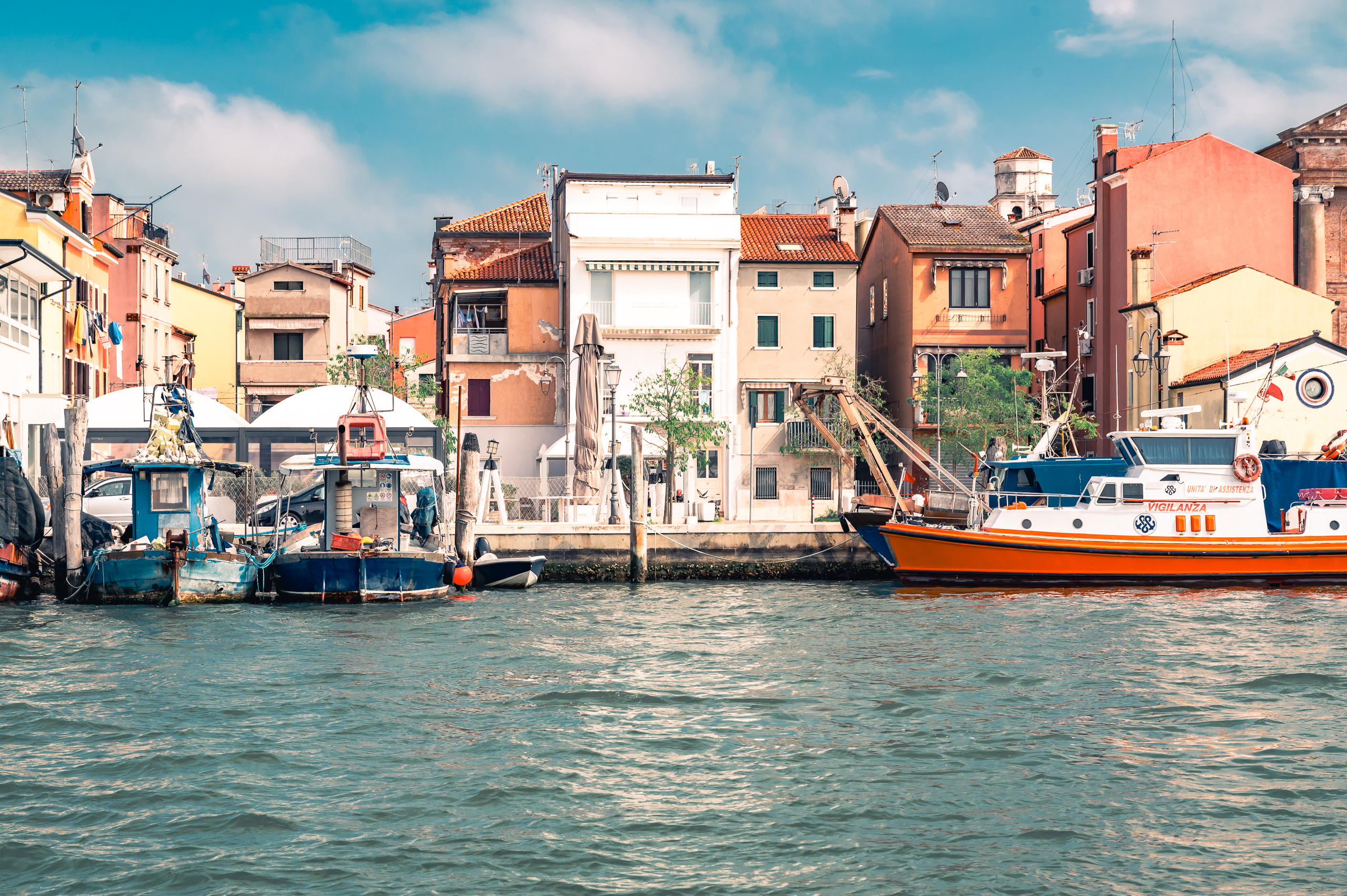
Nestled into the southern end of the Venetian Lagoon, Chioggia is often dubbed ‘Little Venice’, a moniker that doesn’t quite do this little town the justice it deserves. While it’s true that Chioggia is the only town outside of Venice that you’ll find that really looks like Venice, it’s also a very different world. The major industry in Chioggia is fishing and there’s a large fishing port and industrial centre just outside of the Centro Storico (old town) that lends Chioggia a modern grit. So where you might expect gondoliers, there are none, replaced by colourful Bragozzi fishing boats and little speedboats that belong to locals and are used for everything from moving goods to jaunts out into the lagoon. And perhaps best of all, this charming fishing town is a comparatively serene escape from the bustling crowds of Venice, its superstar neighbour.
But if you do want to see Chioggia at its fullest, most Venetian self, a visit on the second Friday of July will bring you to town just in time to see the massively popular Chioggia fish festival, when the streets are turned into one massive dining hall, serving up fish and wine in kilograms.
This guide to Chioggia focuses entirely on the old centre, with tips on where to walk, where to stay in Chioggia and where and what to eat. There’s also a practical guide to getting to Chioggia at the bottom, where we’ve broken down the various public transport options for the journey.
Exploring Chioggia
The tapestry of narrow calli (the ancient word for streets in the Venetian dialect) that crisis crosses around Chioggia is distinct from Venice, in that they don’t form a chaotic warren of (beautiful) dead ends and twisting alleys. Instead, they align to Roman road principles, laid out in a plain grid sequence, making the little town’s 74 calli simple to explore and rather plain by comparison (but at least you won’t get lost!). Chioggia’s main waterway is the Canal Vena, a busy vein that runs the length of the old town, and has a number of bridges spanning its width, the most notable of which is the beautiful Ponte Vigo just a short walk from the Chioggia ferry stop. Constructed in 1685 and later adorned with marble in 1762, this bridge is often compared to Venice’s Rialto Bridge but you’ll note it’s quite a bit smaller and substantially less packed. But the views, one way over a dreamy lagoon and the other into the town are quite serene.
From the Ponte Vigo, it’s possible to map out the historic centre of Chioggia via the view of the skyline. Look into the town on the right is the bell tower of the Church of Sant’Andrea, which houses the world’s oldest functioning tower clock, dating back to 1386, while directly to the left you’ll note the exquisite facade of the Chiesa Sconsacrata di Santa Croce, and up ahead on the right, you can make out the striking building of the Museum of Adriatic Zoology, built up to the water’s edge with an arched arcade forming a walkway at the side of the canal.
A Macabre Relic
Inside the Chiesa della Santissima Trinità con Oratorio dei Rossi (Church of the Patronage of the Blessed Virgin Mary and St. Philip Neri), there lies, according to bibliographic sources, the body of Saint Feliciano. The skeleton is broken up into recognisable bones and parts, the most complete of which is the skull, and stored in a tall portal, or ark, but there’s very little information about why it’s laid out in this manner. The church has held onto these remains since 1773 — likely also the date of the marble ark’s creation (see 4th image).
The body of Saint Feliciano was taken from the catacombs of San Saturnino in Rome in 1739, according to the General Catalogue of Cultural Heritage. There are several other reliquaries containing what look like decorated fingers and various other bones, but there is, sadly, little to no information available on their providences.
What and Where to Eat In Chioggia
From Ponte Vigo, walk on the left side of the canal (next to Chiesa Sconsacrata di Santa Croce), and you’ll pass a small but formidable collection of bars, cafes and osterias, most of which serve the local delicacies of various lagoon fish and eclectic menus of crostini with spritz and wine, known as Cicchetti (small Venetian-style side dishes enjoyed similarity to tapas). Pick a spot with a good view and order a few plates of Cicchetti for an authentic Veneto lunch. Of note is Bar Sevente serving Cicchetti in a surprisingly modern space (for Chioggia) and the lovely little la Chicchetteria, which places its pink al fresco tables right up against the side of the canal. Our favourite though is Bacaro dalla Gina, a delightful spot that serves a good variety of local fish, Cicchetti and wines onto a view-laden terrace right next to the bridge that leads to the imposing Chiesa della Santissima Trinità con Oratorio dei Rossi.
For a more typical restaurant, El Gato, on Chioggia’s busy central promenade (Corso del Popolo) is one of Chioggia’s few finer dining restaurants and is a good option for seafood plucked fresh from the lagoon. Another option though is Osteria Gusto which has a simple menu of local favourites ever so slightly elevated, with standout dishes like tuna steaks coated in sesame.
When in Chioggia, we like to embrace the local ambience in the eateries and often find ourselves in the lagoonside Pizzeria Vigo in the scenic Piazzetta Vigo with views of the namesake bridge. It’s just a small pizza spot cooking authentic wood-fired pizzas with a steady contingency of locals pulling up on mopeds for their takeaways. We always eat outside and have a carafe or two of wine. Its pizzas are classic, delicious, fresh, and its cheap and cheerful in the best possible way.
A Veneto Culinary Secret
A little-known culinary gem that was once omnipresent across the Veneto region is available from a half-a-century-old establishment here in Chioggia. Crema Fritta, a historic Veneto street food has sadly died out across much of the region (even in Venice where it was known as il rombo del Doge), but in Chioggia, there’s at least one Cremeria still serving it. Crema Fritta is a little heavenly diamond of deep-fried custard. The skin, golden and ever so slightly firm resists the bite at first before yielding with a thick slab of firm yet creamy custard, flavoured with vanilla. We tried it at the Chioggia institution Cremeria Gelateria da Roberto (which has been serving the delicacy since the 1950s) and immediately ordered a larger helping served in a cone — it’s so good!
Where to stay In Chioggia (and Venice)
Little Chioggia has a small collection of good hotels in the old town (Centro Storico), but there are more resort-like options nearby in Sottomarina if you’re looking for a beach holiday (though we recommend Lido over Sottomarina as it’s much more beautiful and the quality of hotels is much higher).
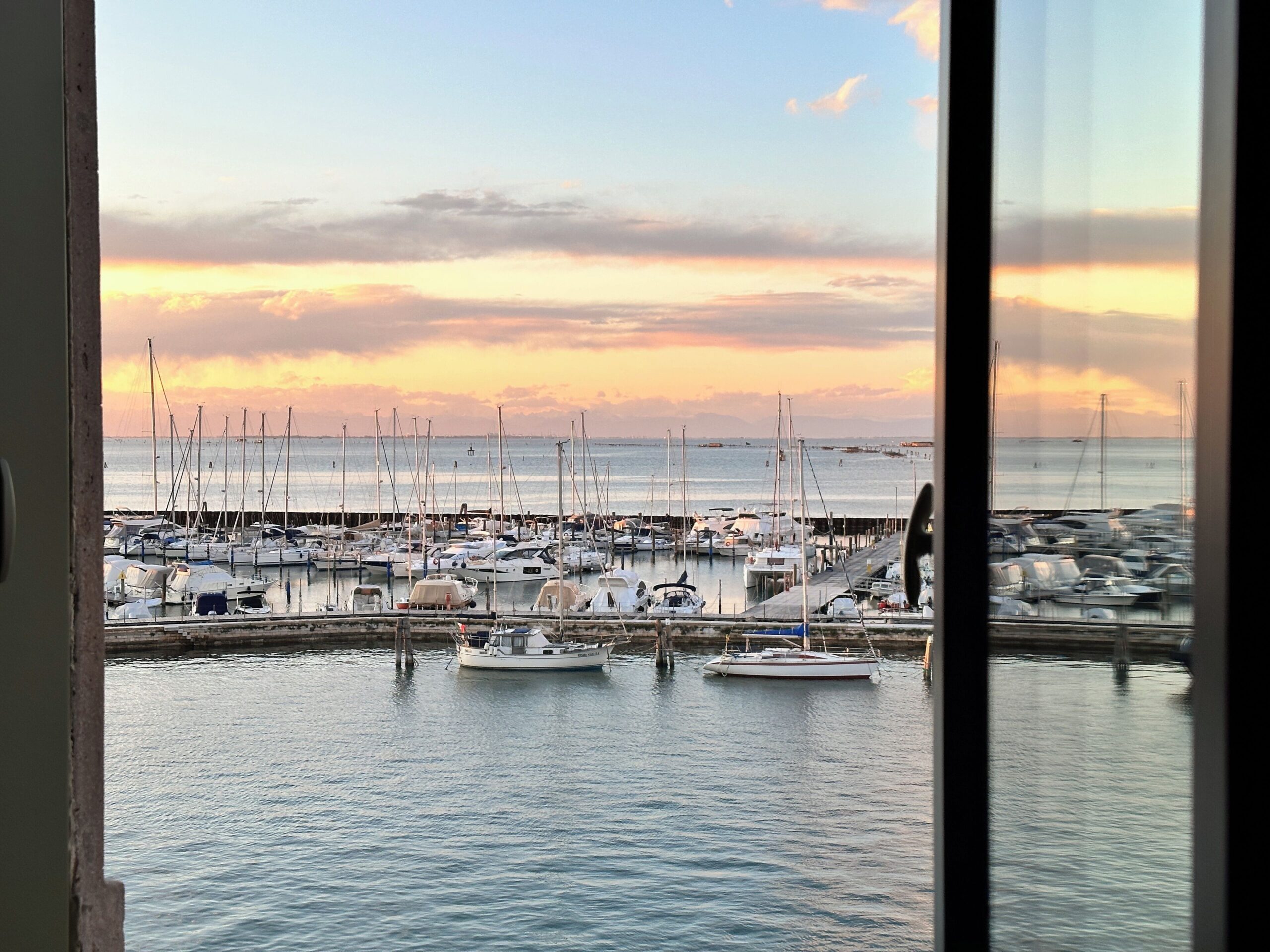
Hotel Grande Italia, Choiggia
This wonderful little hotel is perched right on the tip of the marina in Chioggia. On our last visit, we stayed for two nights in the Hotel Grande Italia, a four-star hotel with a small but well-presented collection of rooms, with lagoon and canal views. The rooms are well-appointed and modern, and the service is convivial and helpful throughout.
If you’re travelling to and from Chioggia by Vaporetto there is no better location as the Hotel Grande Italia is just a few steps from the ferry terminal, which takes you directly to Venice (see below).
For more information and to book a room at Chioggia’s Hotel Grande Italia, click here.
A Beautiful Garden Hotel in the Heart of Cannaregio
This stunning boutique hotel in Venice is tucked away in a garden in Cannaregio. The Madama Garden Retreat is run by a small team of helpful staff, along with the namesake Madama, who runs the spot as something of a high-end boutique B&B. The rooms are modern and large, and those in the ground floor benefit from direct access to the gardens, beautifully finished with lemon trees and wisteria. Beverages are served in the garden too, overlooking the local area from its wonderful little jetty, where you can also book a gondola or water taxi to.
The Madama Garden Retreat has extremely favourable reviews with a stable 10/10 on Expedia at the time of writing. Book a room at the Madama Garden Retreat here, or if you’d like to learn more about it, take a look at our review.
How to Travel To Chioggia from Venice
The trip from Venice to Chioggia by Vaporetto is a scenic journey through the Venetian Lagoon or, entirely by bus (and much less scenic). For much of the year, the only Vaporetto option is the combination service ACTV Line 11 (see below), with multiple changes between Venice and Chioggia. It can be a bit of a slog and I wouldn’t recommend it for a day trip but it is possible. But it’s much more sensible to spend a night in Chioggia.
If you’re arriving in Venice by air, there’s also the option to travel to Venice via Chioggia, which makes it more of a round trip. From Aeroporto MARCO POLO, board the local Arriva bus number 80 and it’ll take you directly to Chioggia in about 1 hour and 20 minutes.
In the high season, there are two options for direct ferries from Venice to Chiogia. These are:
ACTV Line 19 (Seasonal Service)
Line 19 offers a direct connection between Venice’s San Zaccaria, and Chioggia during the summer months, from May 31 to September 30th, with limited runs in the day and evening.
Linea Clodia (Seasonal Service)
The Linea Clodia is another seasonal service offering direct boat transfers between Venice and Chioggia but with extremely limited timings with a morning departure from Chioggia, and an early evening return from Venice.
ACTV Line 11 (Year-Round Service)
For most visitors, the best route between Chioggia and Venice is the ACTV Line 11, year-round service. The steps can look a bit intimidating, but it’s a good route with plenty to see and you can break it up by visiting Lido (and it’s shorter if your hotel in on Lido). You must buy your tickets either from a Venezia Unica sales point, authorised retailer or directly on board.
From Venice to Lido di Venezia: Take Vaporetto line 1 or 5.1 from Venice (e.g., Piazzale Roma or San Zaccaria) to Lido S.M.E. (Santa Maria Elisabetta).
Lido: At Lido S.M.E., transfer to the bus to the Alberoni ferry terminal.
Ferry to Pellestrina: From Alberoni, a ferry transports passengers and vehicles to Pellestrina.
Bus on Pellestrina: You’ll board another bus that travels the length of Pellestrina Island to the Pellestrina ferry terminal.
Ferry to Chioggia: Finally, a ferry takes you from Pellestrina to Chioggia.
The journey typically takes 1 hour 30 minutes. but keep in mind that the services operate with varying frequencies. Check the most recent timetables here.
If you found this guide helpful, please consider booking your hotels with this link or the links in the article, from which we may earn a small commission.
Looking for more hidden gems in and around Venice? Our top truly hidden Venetian secrets.
